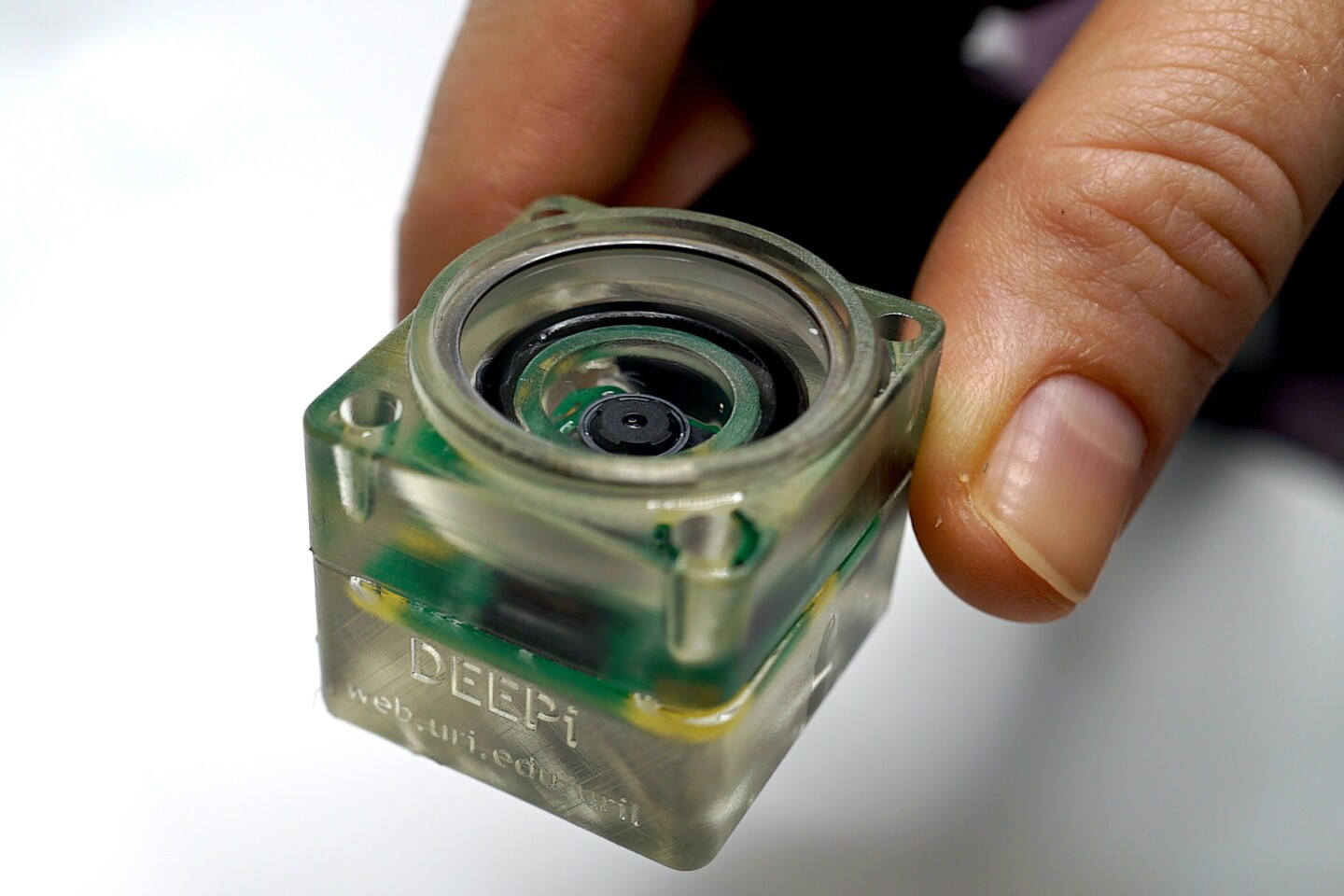Even though underwater remotely operated vehicles (ROVs) are getting smaller, their communications cables have remained relatively fat and hefty. That may about to change, though, thanks to a new fishing-line-based fiber optic tether.
Although wireless systems are in the works, ROVs presently have to be hard-wired to their surface-located human operators. This is accomplished via a cable/tether that transmits commands down to the vehicle, while also sending real-time video and other data up to the surface.
The problem with today's relatively thick cables lies in the fact that if you want to send the ROV down a few thousand meters or so, you need quite a large, heavy reel full of cable. This means that even if the ROV itself is fairly small, a big surface vessel is still required to accommodate that reel.
Seeking a lighter and more compact alternative, the University of Rhode Island's Asst. Prof. Brennan Phillips looked to a combination of fiber optics and fishing line. He collaborated with Jim Owens at Rhode Island's Nautilus Defense, who developed a prototype fishing-line tether consisting of a fiber optic core surrounded by a braided polyethylene sheath.
That tether is deployed from an off-the-shelf electric fishing line reel, which is basically a miniature winch. The resulting experimental setup is known as the Fiber Optic Reel System (FOReelS), and while it was designed specifically with Phillips' DEEPi miniaturized deep-sea camera in mind, he tells us that it could certainly also be utilized on small self-powered ROVs.

In tests conducted last December in Bermuda, the tether was successfully used to transmit real-time DEEPi video from a depth of 780 m (2,559 ft) … and no big ship was required.
"We can use a fishing boat to get this new system deep in the ocean instead of a 100-foot vessel," says Phillips. "That means each time we go out on the water, we’ll be saving many times what it would normally cost for an operation."
FOReelS is described in a paper that was recently published in the journal Sensors.
Source: University of Rhode Island





